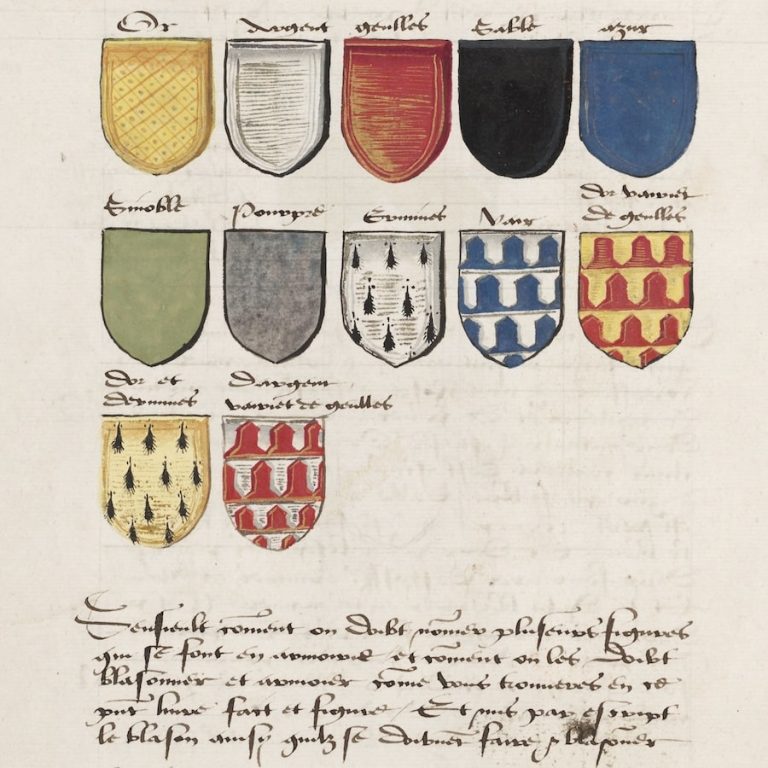Héraldique
Héraldique
Scaricamazza
·1723·
Scaricamazza
·1723·
How to color a shield?
How to color a shield?
The coat of arms, mainly, is composed of two elements: colours and figures. If you think about it, the choice of colour is important: it affects 50% of the results. First, let’s remember that in heraldry there are six traditional tinctures divided into two main groups: metals and colours. The Argent (silver) and the Or (gold) are metals, while the colours are four: Gules (red), Sable (black), Azure (blue) and Vert (green). In the second group, we can add a fifth, the purpure (purple), even if some important French heraldists might turn up their noses.
These heraldic tinctures are absolute: the tones do not matter. Is it blue or light blue? It doesn’t matter, it’s azure. We can complicate our discussion by adding some stainable colours, non-standard tinctures: murrey, sanguine and tenné. Murrey is mulberry-coloured; sanguine is a brownish-red, or blood-red colour; tenné is an orange-tawny colour. They are only known to occur in post-medieval heraldry and the French look at this matter as an exotic fact, especially English. Dear Anglo-Saxon friends, as an Italian, when I have to recognize a tint, perhaps 800 years old and oxidised, I must confess that I sympathize with the French heraldists: six tinctures are enough.

In Europe, there is a third group, furs: Ermine and Vair. We will see them in a separate post. Speaking of colours, in a previous lesson we recalled the basic rule of heraldry: a colour may not be placed on a colour or a metal on a metal. According to this principle, therefore, a red lion can only roar on a silver or gold field. In contrast, a silver moon will shine in a blue, red, black or green sky. If you are English, let’s say that the same moon will have more choice (its field can also be murrey, sanguine or tenné), but it will not be able to shine in Paris as it would nonchalantly in London. I think it’s cardinal to add a last note: that colours are full of meaning: historical, emblematic, and symbolic. We know that, in 1150, red was predominant; we know the emblematic value of French blue and the symbolic value of gold or silver. Behind the colours, there is a world, a complex world that has to be studied. Be curious, knowing that, in this field, rigidity is equivalent to noise: the meanings are so changeable that only a careful study or a healthy and legitimate disinterest are the keys to a perfect choice.